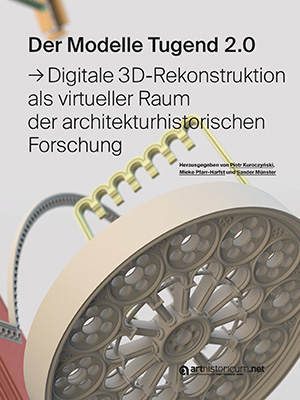
How to Cite
License

This work is licensed under a Creative Commons Attribution-NonCommercial-NoDerivatives 4.0 International License.
Identifiers
Published
Der Modelle Tugend 2.0
Digitale 3D-Rekonstruktion als virtueller Raum der architekturhistorischen Forschung
The Model Virtue 2.0 - Digital 3D-reconstruction as a virtual space of architectural-historical research understands digital 3D-reconstruction as part of interdisciplinary object-based research. In the guise of a manual, comprehensive methodologies at the interface between archaeology, art and architectural history and computer graphics and cultural informatics are presented and discussed. The central aim of the book is to illustrate the width of the current scientific debate focused on digital 3D reconstructions and to present previous traditions and developments, the current state of research and practice as well as future challenges and desiderata. Students, scientists and interested laypersons will receive a profound overview of the topic of digital 3D reconstruction in the field of architectural history. The work also offers the specialist community a solid basis and thus the point of departure for the identification of future fields of action and suggestions for further debate.






